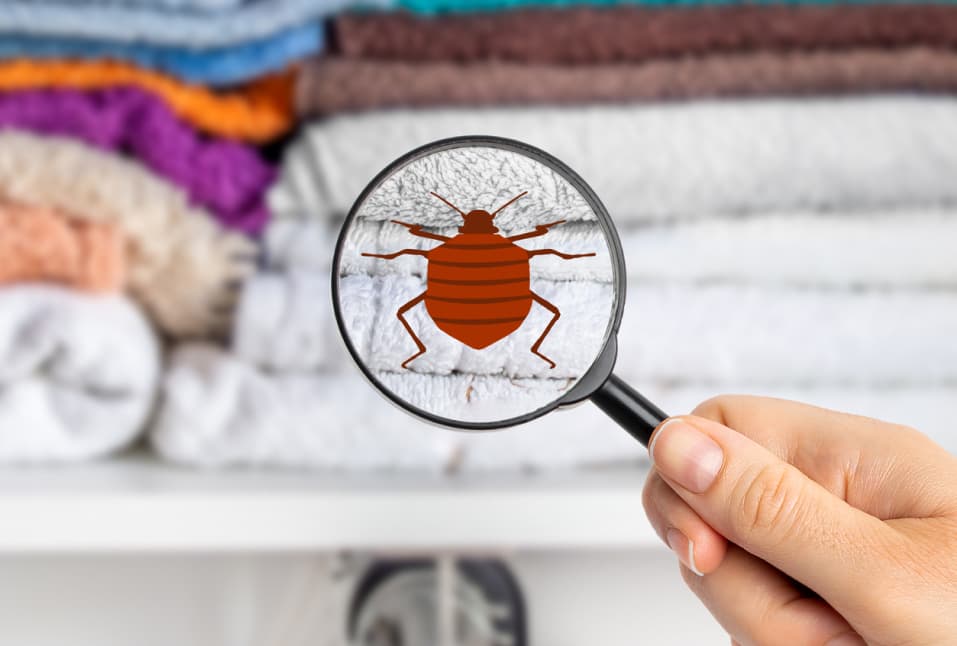The Scientific Research of Insect Control: Recognizing the Biology of Common Household Vermin
In the realm of insect control, a profound understanding of the organic details of usual family insects works as the keystone of efficient monitoring approaches. By delving right into the nuanced life cycles, habits patterns, and recreation approaches of these undesirable trespassers, we uncover a wealth of knowledge that can dramatically affect our capability to regulate their populaces. From the meticulous habits of little insects to the facility breeding rituals of larger pests, the insights acquired from studying their biology provide a crucial structure for creating targeted and lasting services. Join us as we unravel the scientific supports of bug control and check out the remarkable world that exists within our homes (philly best pest control philadelphia bed bugs).
Importance of Pest Biology
The understanding of insect biology is essential for efficient insect control strategies in household settings. By diving right into the biology of common house pests, individuals can get valuable understandings right into their habits, life process, and habitats. This understanding is essential for creating targeted and sustainable insect management approaches that decrease the usage of unsafe chemicals and decrease ecological impact.
Pest biology incorporates different variables that influence bug infestations, including reproductive rates, favored food resources, and survival devices. Understanding the breeding patterns of bugs such as insects or cockroaches can aid home owners implement preventive measures to interrupt their life cycles and minimize populations. Similarly, understanding the foraging actions of rats or ants can aid in situating and eliminating their access indicate food sources within a family.

Life Cycles of Common Bugs
Comprehending the life process of usual bugs is important for applying reliable insect control actions in domestic settings. The life cycle of an insect describes the phases it experiences from birth to the adult years and includes egg, larva, pupa, and grown-up stages. Understanding these phases assists in identifying the most weak spots in the insect's life process for targeted control techniques.
As an example, typical home insects like roaches have an incomplete transformation, advancing from egg to nymph to adult. Recognizing this cycle can assist in targeting egg-laying websites, disrupting reproduction, and stopping the development of brand-new grownups. In contrast, insects like insects go through a full transformation with egg, larva, pupa, and grown-up phases. By concentrating on eliminating breeding websites such as standing water, it is feasible to interrupt the life cycle and minimize insect populaces successfully.
Actions Patterns of Family Insects
A comprehensive analysis of home pests discloses intricate habits patterns that play a vital role in comprehending pest control techniques. Household insects show different habits patterns that contribute to their survival and ability to grow in human habitats. Comprehending these patterns is crucial for reliable bug monitoring.
One usual habits amongst household pests is their destination to food sources. Insects such as ants, roaches, and pantry bugs are drawn to food spills, crumbs, and deposits. By identifying and getting rid of these food resources, home owners can disrupt the insects' foraging patterns and reduce invasions.

Additionally, many home pests show social actions, residing in nests or groups. Recognizing the social dynamics of bugs like ants or termites is important for successfully eradicating entire colonies instead of simply individual bugs. By comprehending the actions patterns of house insects, bug control professionals can establish targeted and effective approaches to manage problems successfully.
Reproduction Methods in Parasites
Reproduction in pests involves elaborate organic devices that drive population growth and problem rates. Bugs have actually progressed various strategies to ensure the extension of their types and the effective colonization of brand-new environments. One common strategy is quick recreation, where insects have brief gestation durations and generate multitudes of offspring. This strategy allows them to promptly develop prospering populaces in positive conditions. Furthermore, some insects display complex mating habits, such as scent communication and courtship routines, to make sure successful reproduction.
Another vital element of parasite reproduction is the advancement of resistance to regulate steps. Pests can adjust to pesticides and other elimination techniques with systems like hereditary mutations and behavior modifications. This ability to evolve swiftly presents a substantial difficulty for parasite control efforts, needing constant advancement in monitoring techniques.

Influence of Biology on Parasite Control
The biological features of insects play an important role in shaping the efficiency of parasite control techniques. Understanding the biology of usual house insects is important for establishing successful insect monitoring techniques (philly pest control service philadelphia bed bugs). Aspects such as the lifespan of a parasite, its reproductive rate, liked environments, and feeding behaviors all affect the choice of control steps
For example, bugs with rapid reproductive rates, such as cockroaches or particular varieties of ants, may call for a lot more continual and hostile control efforts to stop population spikes. Similarly, bugs that have actually developed resistance to particular chemicals will certainly necessitate making use of alternate control techniques to efficiently take care of invasions.
Furthermore, the biology of insects additionally affects the timing and regularity of control applications. Some insects are extra energetic during particular times of the year or under specific environmental problems, needing targeted interventions during these periods to achieve ideal outcomes.
Conclusion
In verdict, recognizing the biology of typical home parasites is essential in effective bug control. By understanding their life cycles, behavior patterns, and reproduction approaches, we can home pest services develop targeted and effective methods to take care of and get rid of these pests. By thinking about the organic facets of bugs, we can execute extra sustainable and long-lasting solutions that lessen the effect of insects on our settings and homes.
In the world of bug control, an extensive understanding of the organic complexities of usual house bugs offers as the foundation of efficient administration techniques.The understanding of parasite biology is important for efficient parasite control techniques in property settings.Understanding the life cycles of typical insects is important for carrying out effective parasite control procedures in residential atmospheres.The biological features of parasites play a critical function in forming the efficiency of insect control methods.In conclusion, comprehending the biology of common family insects is important in reliable insect control.